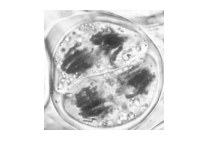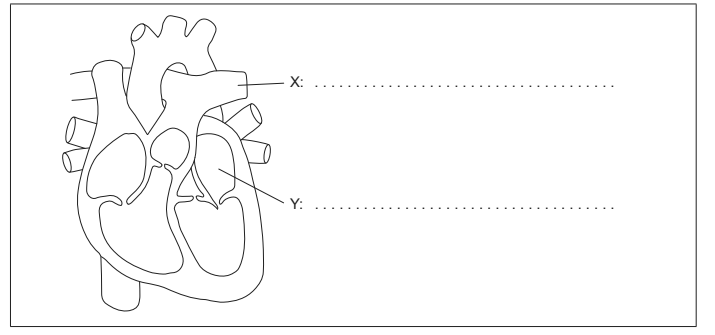Question
The micrograph shows a plant cell of Lilium grandiflorum during meiosis.

a. (i) Identify, giving reasons, the stage of meiosis shown by this cell.
(ii) Outline the law of independent assortment.
b. The genes for cystic fibrosis and blood group are not linked. Two parents are heterozygous for cystic fibrosis. One parent has blood group O and the other has blood group AB. Using a Punnett square, determine the probability that their child will have both cystic fibrosis and blood group A.
Answer/Explanation
Ans:
a (i)
a. anaphase II
b. as four daughter cells are being formed
OR
the centromeres split / sister chromatids separate
OR
sister chromatids/ chromosomes are pulled «by the spindle microtubules» to opposite poles
a (ii)
a. two «or more» traits/genes are inherited independently of one another Accept vice versa.
b. observed for traits/genes that are not linked/far apart on the chromosome
c. «due to homologous» chromosomes aligning independently/randomly on equator during metaphase I/meiosis I
d. during anaphase I homologues pulled to separate poles
b)
a. correct parental genotypes shown / Ff ii, FfIA IB
b. correct probability: \(\frac{1}{8}\) OR 12.5%
Question
(a) Label X and Y on the diagram of the heart.

b. Explain how the circulatory system is able to transport the blood under high pressure from the heart to the rest of the body.
c. The heart responds quickly to physical activity. Describe how heart rate is controlled to meet the increased circulatory demands.
Answer/Explanation
Ans:
a) X: pulmonary artery
Y: left atrium Accept auricle
b)
a. contraction of ventricle creates high pressure Features require an explanation, a list is inadequate b. blood at high pressure is carried out of the heart through arteries
c. thick muscular walls of arteries resist pressure/prevent leaks
d. elastic recoil of arterial walls helps to push blood
e. narrow lumen of arteries maintain pressure
c)
a. nerve impulse from medulla/brain acts on heart/right atrium
b. pacemaker/sinoatrial node/SAN increases/controls contraction of heart
c. epinephrine/adrenaline «rapidly» increases heart rate